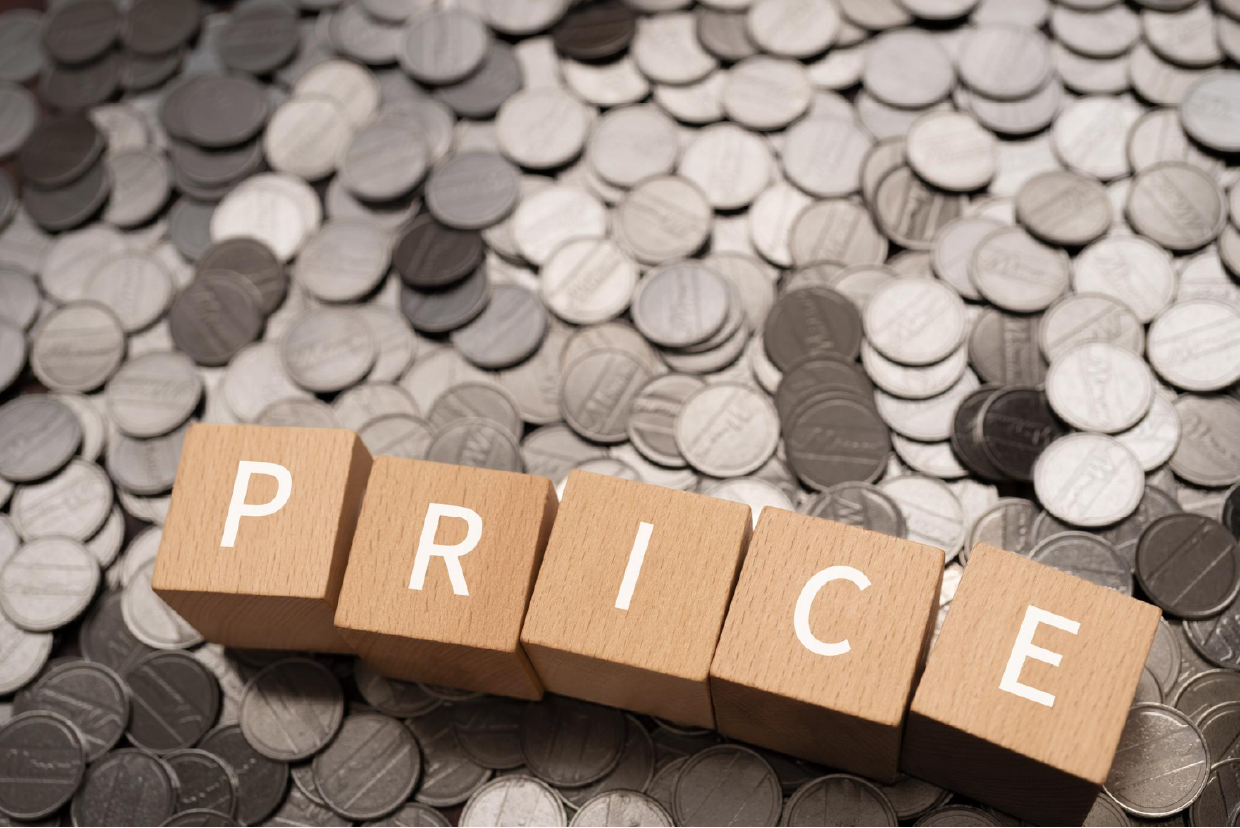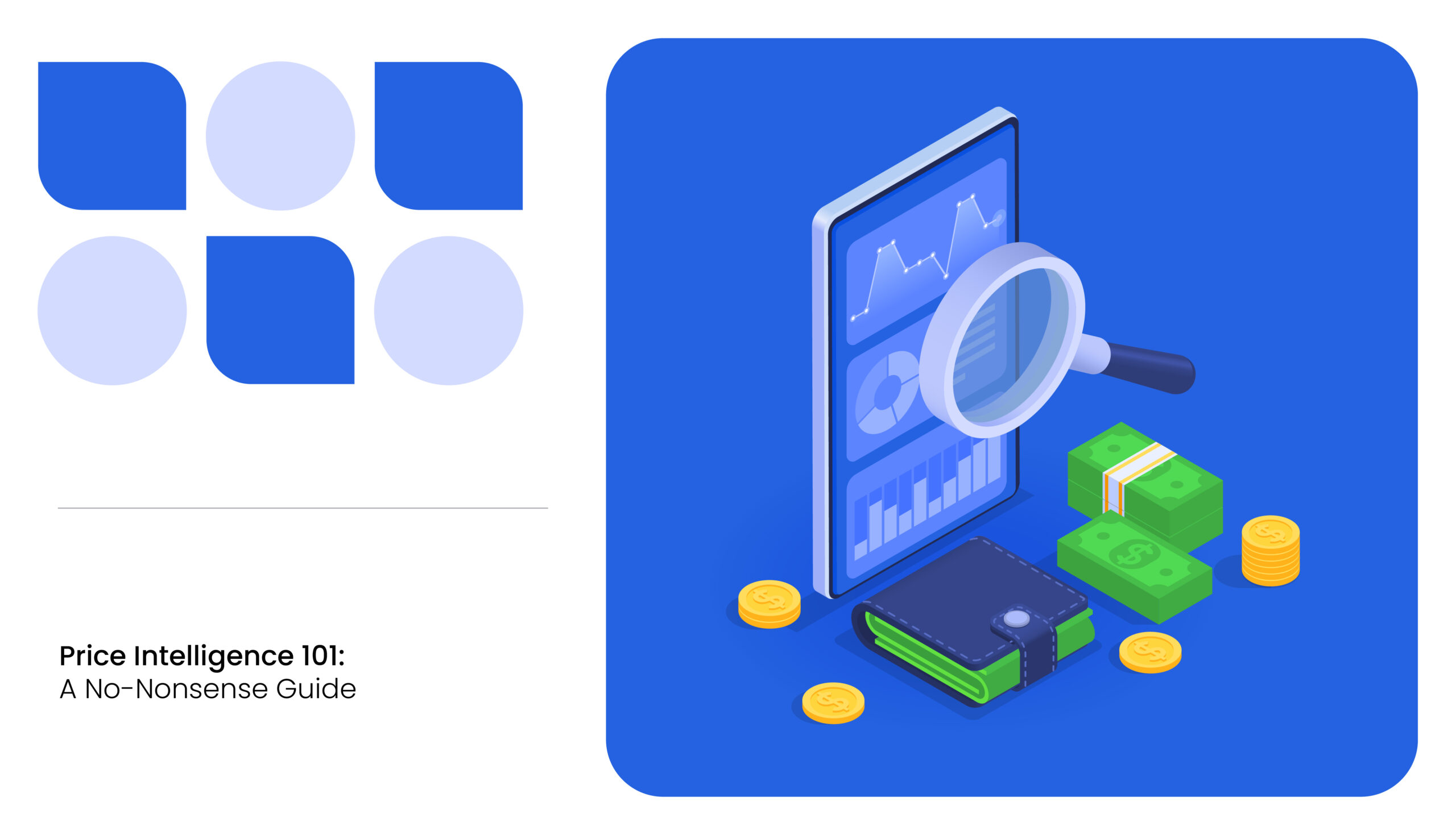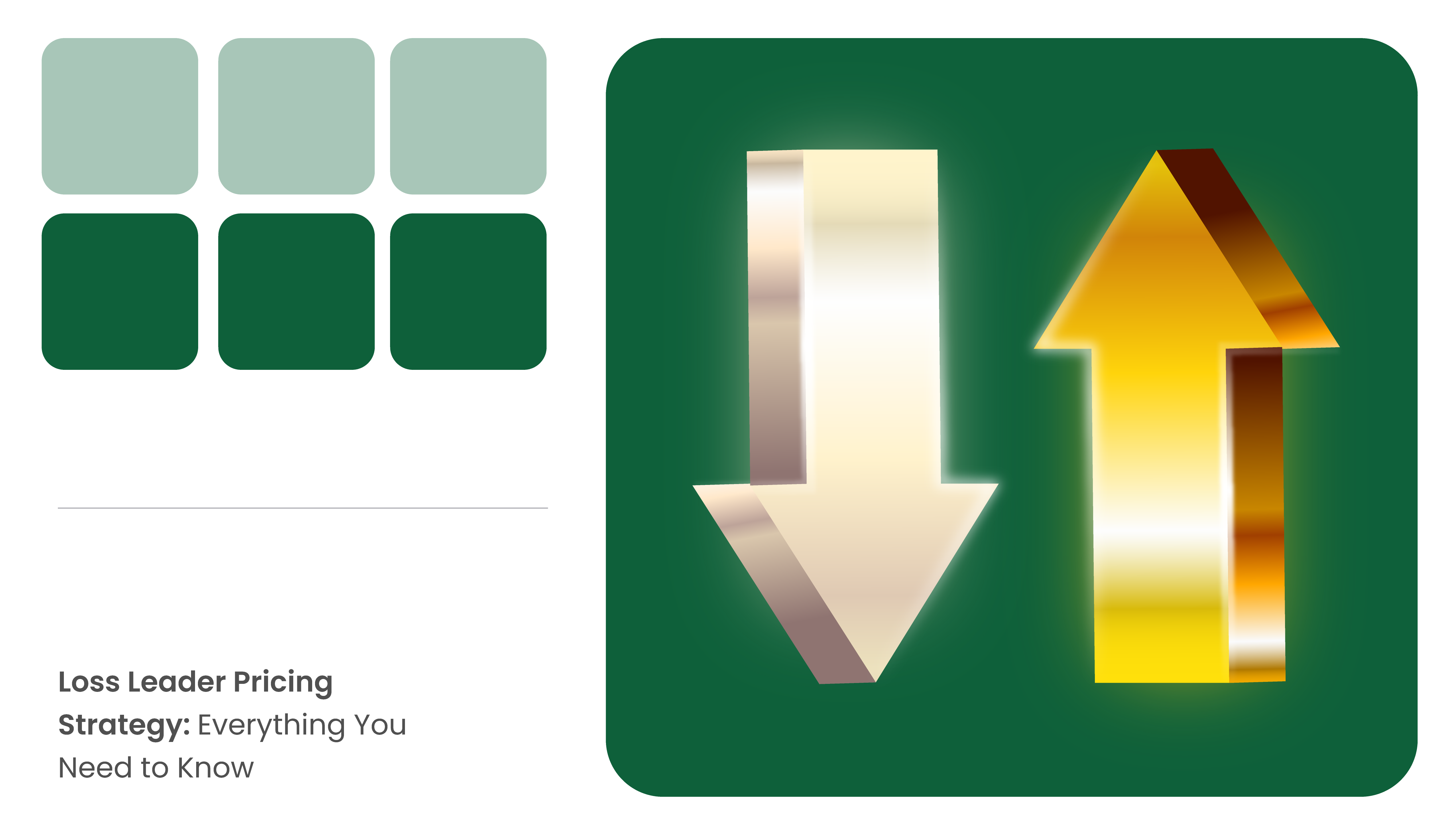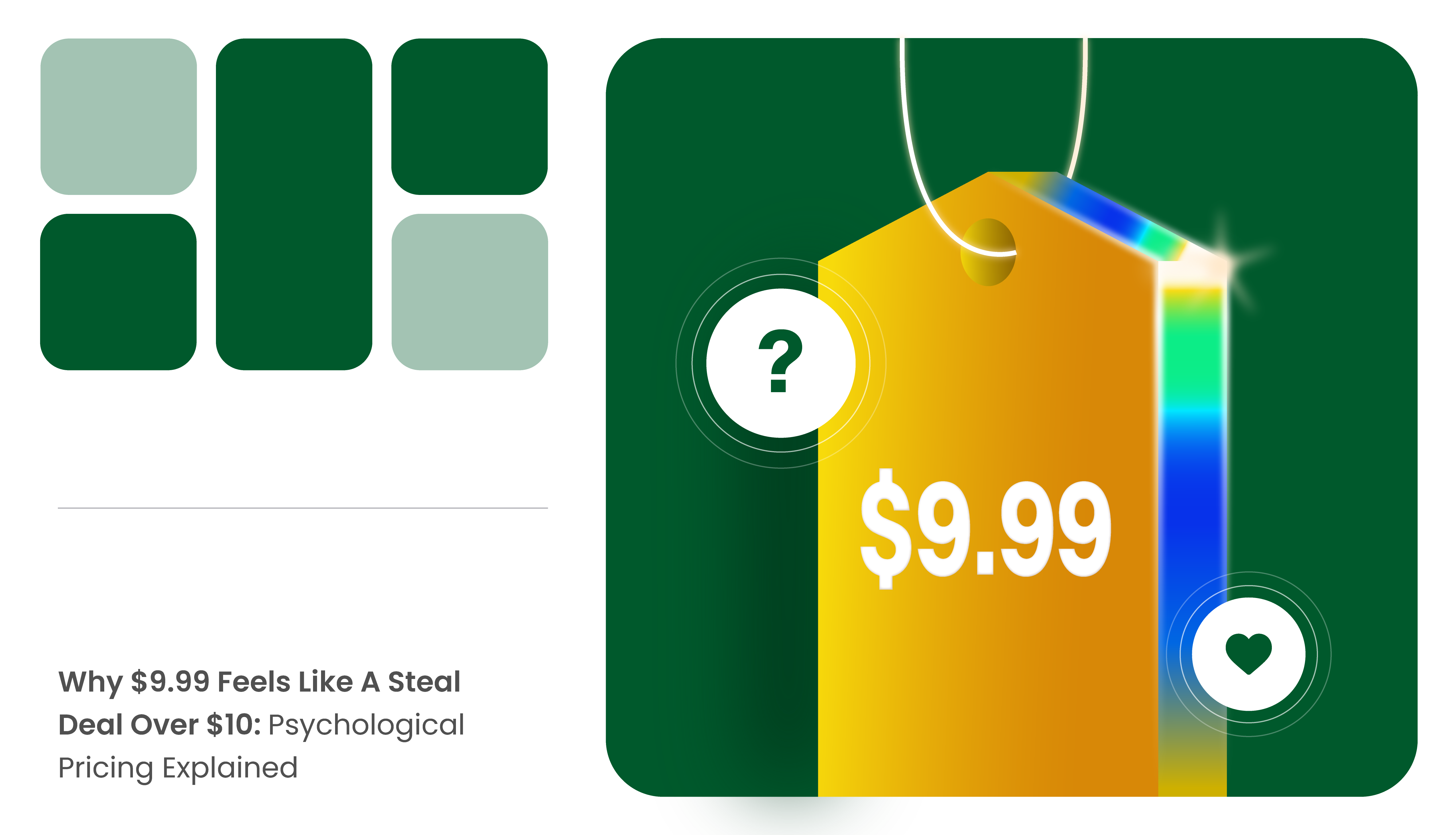During the 2019 Prime Day sale, Amazon mistakenly priced camera equipment at $94.48. These items are usually priced between $3000 and $13000. This caused a huge ordering spree, and Amazon had to finally fulfill the orders even though they rectified the mistake in under 30 minutes. This is an example of how misdirected e-commerce pricing strategies can create unprecedented complications.
E-commerce pricing strategy is a complex process that involves the retailer setting the prices of its online product offerings. Factors including production cost, handling cost, expected revenue, average order value, and more influence this decision.
Why Does E-Commerce Pricing Strategies Matter?
An e-commerce retailer aiming to scale should consider pricing strategy paramount to the success of its online business. It should be designed to benefit both the consumer and the business.

A well-thought-out pricing strategy can:
- Enhance brand perception
- Boost conversion rates
- Increase profitability
A miscalculated pricing strategy can:
- Lose customer base and trust
- Cause profit erosion
- End in business failure
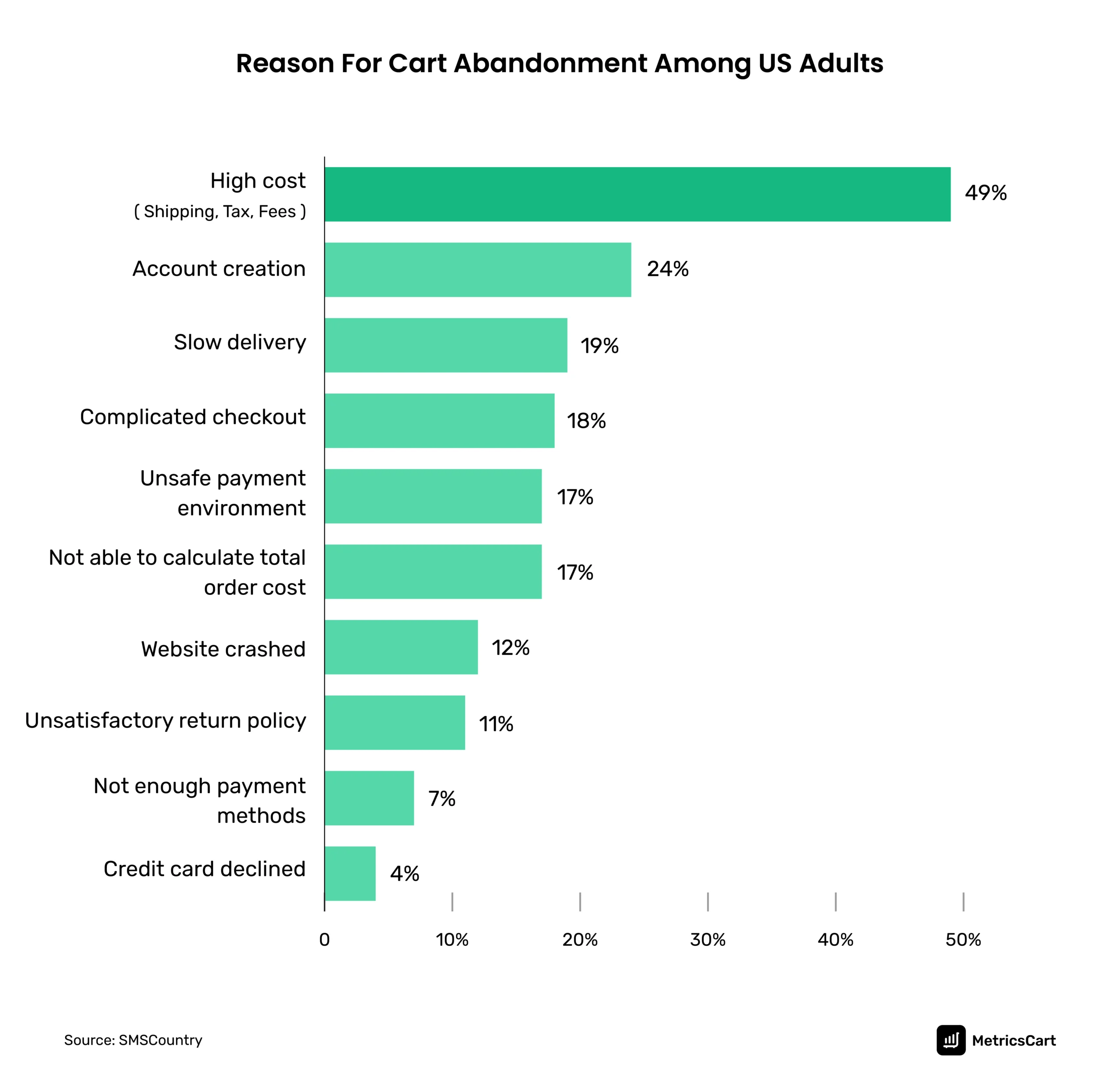
According to a 2024 survey by SMSCountry, 49% of US adults abandon their carts because of high costs, including shipping costs, taxes, etc. Economic inflation in the US has forced most consumers to make economical shopping decisions that save money and effort.
However, online grocery sales show steady growth even amidst inflation. Amidst these fluctuations, to increase the buying behavior of consumers, online retailers price their products more aggressively.
How To Choose the Best Pricing Strategies?
There are no sure-shot mantras for getting your prices right. Setting e-commerce pricing strategies could be as simple as using the Manufacturer’s Suggested Retail Price (MSRP) for your product.
Otherwise, factors such as the nature of the product, market conditions, competitor prices, product positioning, target audience, etc., can be considered to fix the price of the product.
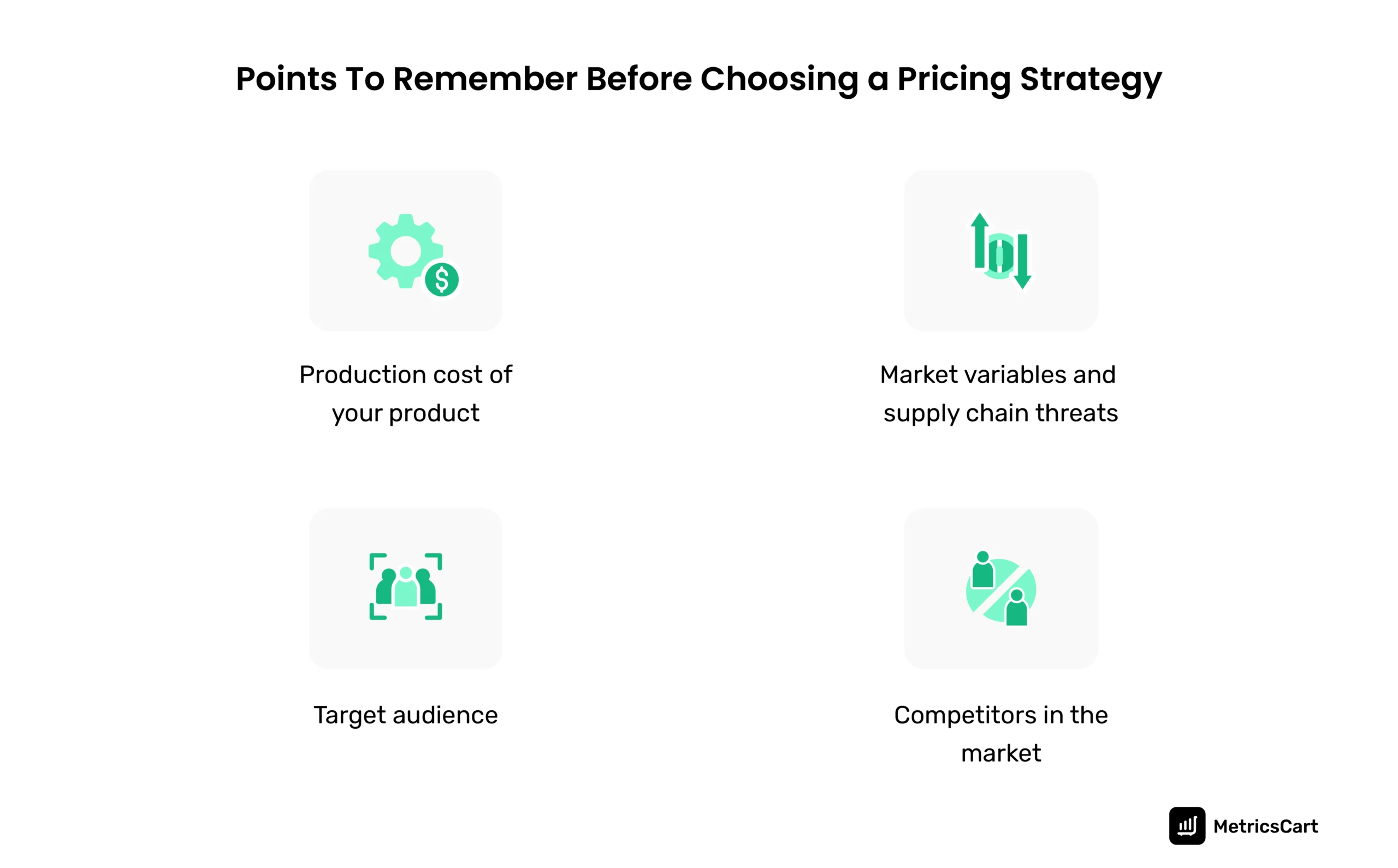
These are highly volatile variables, and hence, the ideal pricing strategy also entails insightful price monitoring measures. The e-commerce business should also ensure that the pricing strategy aligns with fair and ethical market practices.
It is better to avoid Minimum Advertised Price (MAP) violations and other predatory practices to uphold customers’ trust and loyalty.
Read more: MAP Pricing: Everything You Need to Know
Types of E-Commerce Pricing Strategies
As discussed, there are multiple ways to create a pricing strategy for your e-commerce business. The success of these strategies depends upon timely interventions and adaptability to market fluctuations. A keen understanding of consumer behavior is also important.
Pricing methods are usually designed keeping the 3 C’s in mind:
- Cost
- Competition
- Consumer
These three factors work in tandem, and their effectiveness depends on the dynamic nature of the market. Thus, it is important for e-commerce retailers to use price intelligence services to gain insights into market fluctuations.
Here are some of the most commonly used e-commerce pricing strategies:
Cost-Based Pricing
One of the most commonly used pricing strategies. However, it tends to ignore certain aspects like consumer behavior, market volatility, competitor pricing, etc., and fully focuses on the cost of production.
The formula for cost-based pricing is:

Market-Based Pricing
Market-based pricing is similar to competitor pricing, where you set the price of your product based on the existing market demand for similar products.
The reference point can be the prices of your competitors and also the overall demand for your product in the market.
Competitive Pricing
Competitive pricing involves detailed research about your competitor’s products and prices. The idea is to define a price range that works best for your business’s scalability. This strategy works best for mature products that have been in the market for a long time.
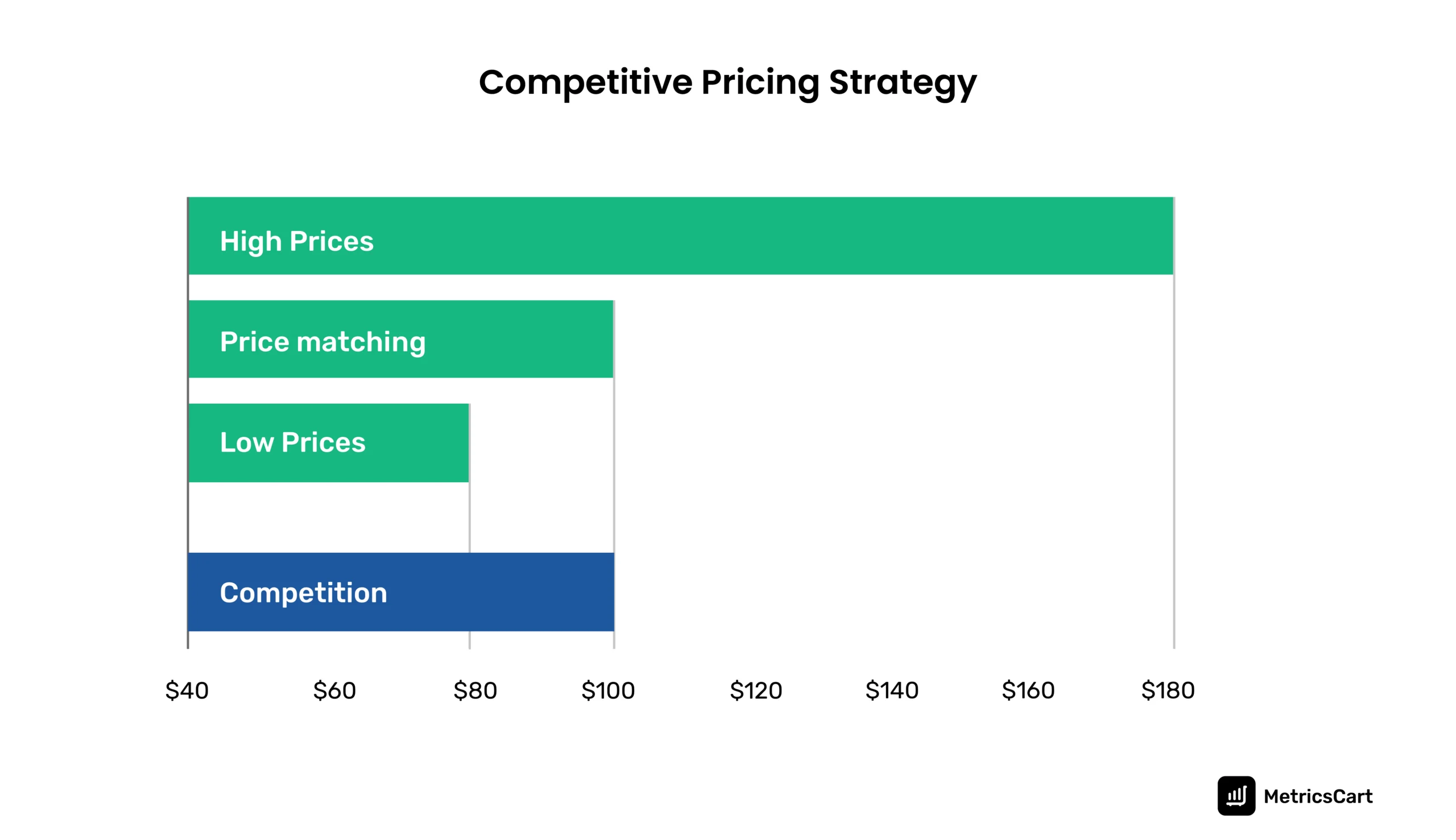
The different types of competitive pricing strategies are:
- Loss leader
- Price matching
- Price skimming
Price skimming is a strategy in which the product price is at its highest during the initial launch. It is gradually reduced to attract price-sensitive customers in the later stage of the product life cycle. Skimming is ideal for a market that is constantly moving with new trends that also attract brand-conscious affluent customers.
Dynamic Pricing
Known by different names, such as surge pricing, demand pricing, or time-based pricing, dynamic pricing strategy stands apart from normal pricing strategies. It has been specifically developed for an e-commerce environment. The basic process involves automating market-based pricing.
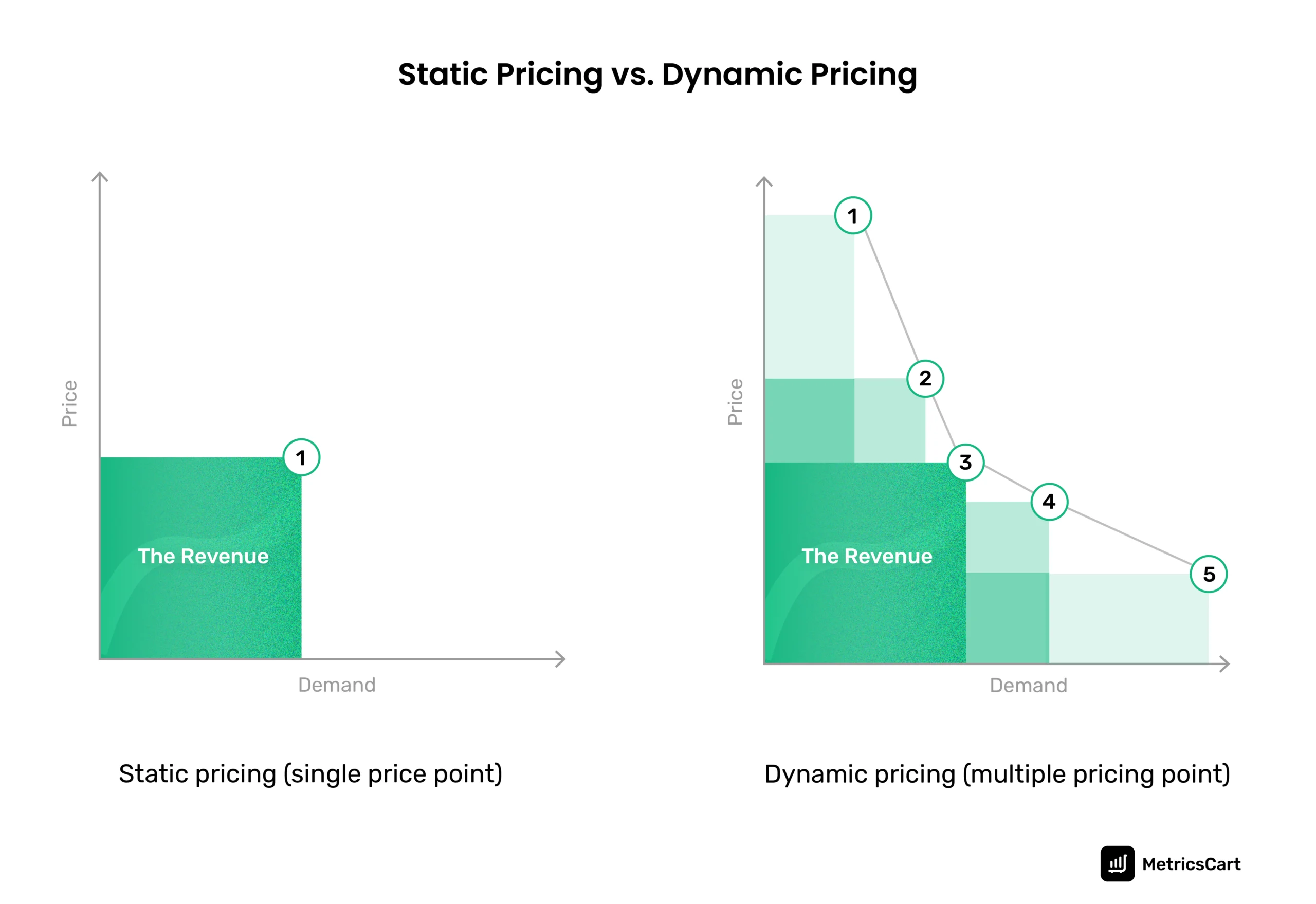
Amazon was an early adopter of this pricing strategy. Since then, it has made many strategic improvements for deciding prices online. Complex algorithms created using consumer behavior data and other market parameters change the prices of products dynamically in real-time.
Penetration Pricing
Penetration pricing strategy, also known as introductory pricing, is used to launch a new product into the market. The product is offered at a low price to gain a competitive advantage, and the price is later increased. This strategy helps establish long-term loyalty and trust with the consumers.
Value-Based Pricing
Consumers always choose a product according to their perceived value. This value is relative, and the pricing strategy should be directly proportionate to this perceived value to maximize sales.
Value-based pricing aims to achieve a balance between a product’s perceived value and its price. Premium pricing strategies also use this system. Examples include premium watch brands, designer apparel, luxury car brands, etc.
Psychological Pricing
A psychological pricing strategy overarches every other pricing strategy, as some kind of human psychological pattern is at work in attracting the consumer toward a product.
Price anchoring is a commonly used strategy that relies on the psychological phenomenon of first-hand impressions. Humans are always biased toward the first-hand information or impressions they receive, and this can help retailers land a successful product sale.
Economy Pricing
In this pricing strategy, production costs are reduced to achieve an economic price scale that appeals to consumers. This type of strategy is most observed in CPG products, home decor, apparel, etc., where the brand identity resonates with consumers.
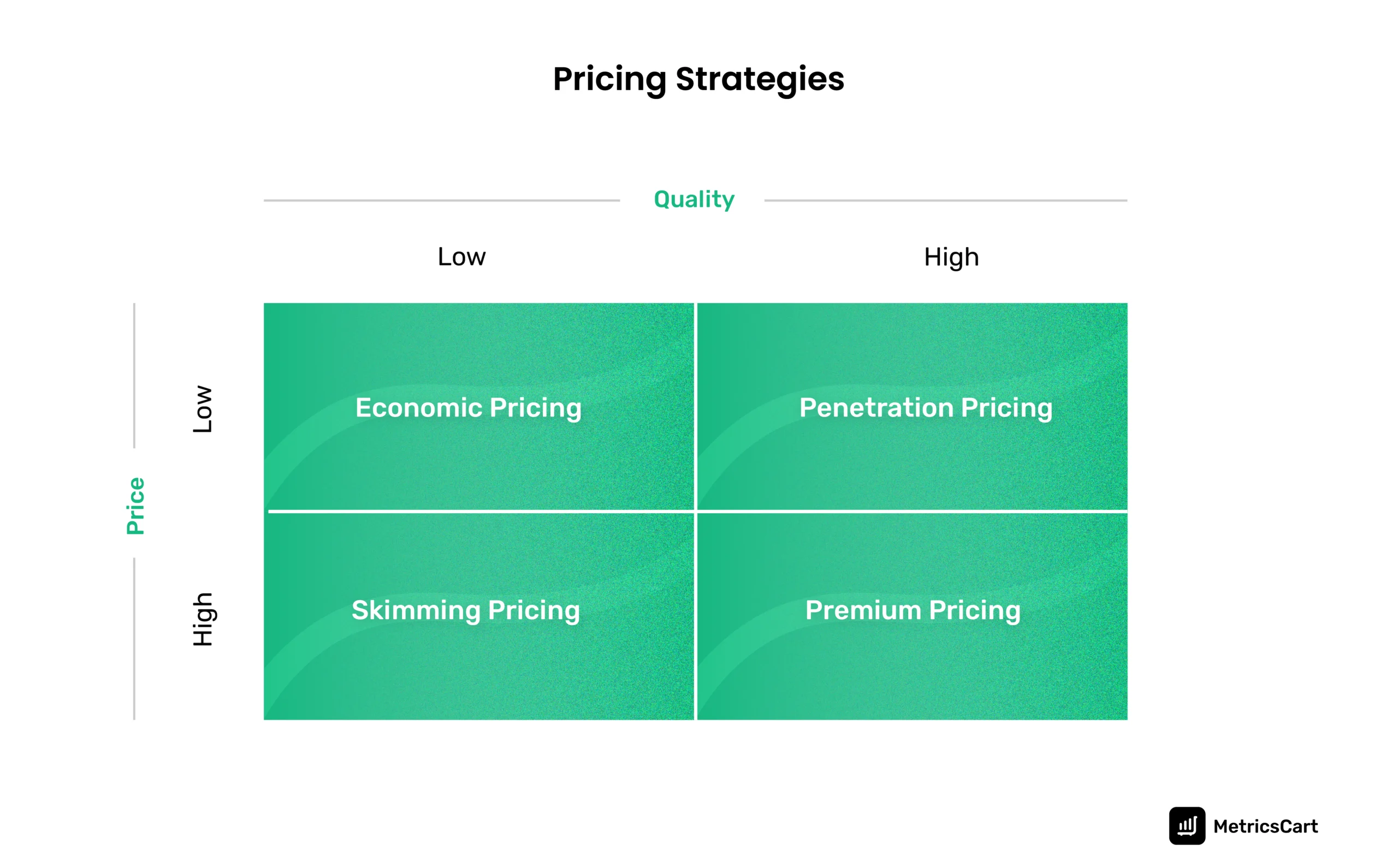
Economy pricing is achieved through streamlining various processes ranging from production, supply chain and logistics. Everyday low pricing is an example of economic pricing, and it is a long-term strategy aimed at consistent sales volumes.
Product Mix Pricing
When a particular brand has multiple product offerings, a product mix pricing strategy enables the business to utilize multiple product mixes for sale together. This strategy has different methods for mixing and matching the different products offered by the brand.
The different types of product mix pricing are:
- Product Line Pricing
- Byproduct Pricing
- Optional Product Pricing
- Captive Pricing
- Bundle Pricing
Bundle pricing is one of the most popular pricing methods under the product mix strategy. It is part of a psychological approach where two or more products are offered as a single bundle with discounted pricing. This attracts the consumers to the brand as they feel that they are getting more value than what they are paying for.
Geographic Pricing
Consumer preferences change from location to location. This requires prices to be updated accordingly.
Geographic pricing enables e-commerce retailers to grasp better the micro-level behavior patterns of consumers and competitors, which will increase their appeal.
Location-based pricing is the future of e-commerce, and big retailers like Amazon and Walmart are already employing it to suggest different prices to consumers at different locations.
Predatory Pricing
E-commerce retailers should always follow fair and ethical practices when deciding product prices. Predatory pricing destroys healthy competition and promotes illegal trade practices, such as selling fake or faulty products.
Loss leader pricing is an example of predatory pricing in which products sell at below-cost prices. Here, the seller aims to sell the maximum quantity in a short time and clear the surplus stocks of products.
Subscription Pricing
Consumers in the e-commerce platform appreciate product choices that align with their preferences.
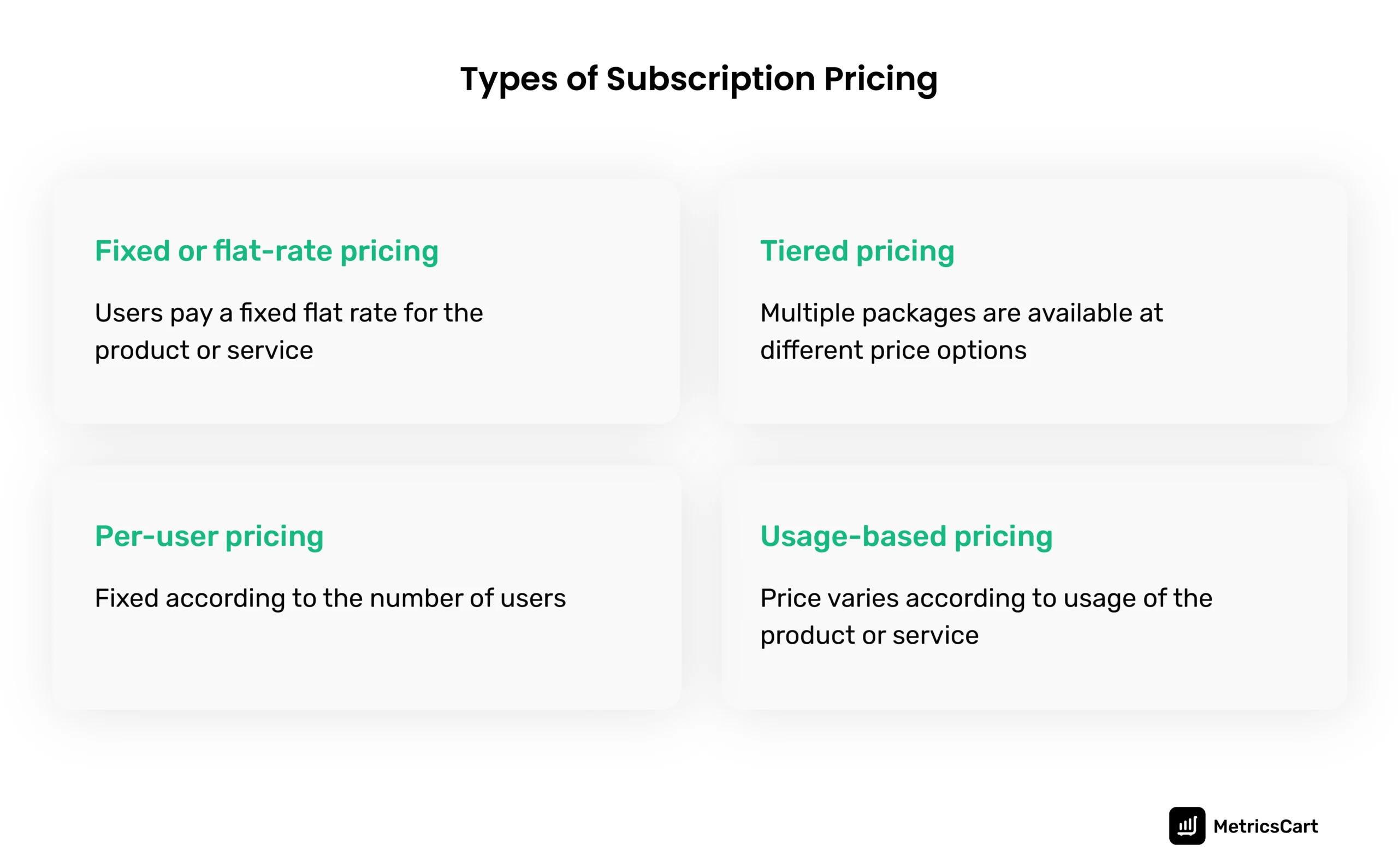
Subscription pricing allows customers to choose the pricing package they prefer and pay a fixed price according to the services offered. This can be a simple flat rate pricing to a more complex usage-based offering.
Following are some of the factors that influence subscription pricing decisions:
- Competitor pricing
- Market orientation
- Product specifics
- Revenue points
A tier-based pricing strategy is common in subscription pricing, where multiple tiers are offered with varied prices and services.
Keystone Pricing
Keystone pricing is one of the least complicated pricing models in the e-commerce retail industry. The price of a product is set at double the production cost. This method provides a 50% gross profit margin to the retailer and an economical choice for the consumer.
However, it is not considered an efficient but safe pricing model.
Promotional Pricing
Promotional pricing, as the name suggests, promotes products or businesses by reducing the price for a certain period of time. This strategy helps e-commerce businesses expand their customer reach and increase sales quickly. For customers, it is an opportunity to buy their favorite products at cheaper rates.
Implementing promotional pricing or discount pricing involves analyzing:
- Target market
- Product category
- Competition involved
There are different types of promotional pricing that are used for different products and at different periods of a product cycle.
Some of these include:
- Coupons
- Flash sale offers
- Gift cards
- Cashback
- Buy one get one (BOGO)
Read more: Types of Promotional Pricing Unfolded with Examples
MetricsCart: Your Best Bet on Price Monitoring
Getting the right pricing strategy for your products requires consistent price monitoring and insights from your own business. You must also analyze the competition’s prices with efficient price intelligence solutions offered by value-oriented services like MetricsCart.
Pricing alone doesn’t guarantee a scalable e-commerce business. Other factors, such as the share of search, stock assortment and availability, MAP violation monitoring, etc., are crucial steps that help grow your business.
Your search ends here. Contact MetricsCart and choose from multiple digital shelf services at the market-best value.

